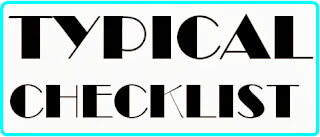In most organizations, there is a 3-tier checking process for every stress system for maintaining the quality of analyzed stress systems. Normally stress system is performed by one (junior or senior), checked by some other (must be experienced enough), and finally approved by the lead stress engineer. Even though the main points which need to be considered are well-known to every piping stress engineer, but still some important points could be missed at specific moments during stress analysis or checking. So a piping stress analysis checklist can be prepared and referred during the process for proper quality control.
The following article will provide insight into the main points that a stress engineer must check during analyzing a system. We request you to inform us of the additional points that We may have missed while writing this article by replying in the comments section.
Important points to consider while checking any stress system (Piping Stress Analysis Checklist Points)
1. Whether the input for pipe material, pipe diameter, pipeline/pipe wall thickness, pipe temperatures (operating, design, and upset), pressures (design and hydro test), insulation thickness, corrosion allowance, fluid density, insulation density is correct?
2. Whether the input for the above design parameters for equipment and nozzles are correct?
3. Whether SIFs for Tee, bend/elbow, cross, and trunnions are taken correctly?
4. Whether the flanged elbow is considered where required?
5. Whether the actual weight of control valves/nonstandard rigid items/valve actuators are considered appropriate?
6. Whether equipment been modeled with the correct dimensions from the general arrangement drawing?
7. Whether trunnion modeling is done following in-house work instructions?
8. Whether settlements/displacements have been considered where required? Normally settlement is used for storage tanks and thermal displacements are used for compressors, turbines, and packaged items.
9. Whether proper parameters have been used for seismic and wind analysis?
10. Whether friction has been included when significant?
11. Whether the expansion stress range has been checked in between maximum and minimum temperatures to which the piping system will be subjected?
12. Whether the effect of friction on sliding support loads been considered?
13. Whether the use of low friction pads been properly marked if used?
14. Whether the analysis is performed for the system with and without friction to check the effect of friction (to determine the worst case) as friction is not something that can be relied on? The harmful effects of friction need to be considered but not the benefits.
15. Whether the Caesar plot and isometric plot are matching with the 3D plot?
16. Whether the loads on connected equipment are within the allowable limits?
17. Whether the thermal effects of pipe supports and equipment support been considered?
18. Whether the flange weight includes the weight of bolting? In large-size piping bolt weights become significant.
19. Whether all possible load cases (startup, shutdown, regeneration, any special process consideration) are considered in the analysis?
20. Whether the proper ambient temperature is used for the location?
21. Whether spring is modeled properly and selected considering all operating temperature cases?
22. Whether adequate documentation in case of gapped restraints (or any special consideration) are mentioned in isometric clearly to assure that supports will be installed in that manner on the construction site?
23. Whether there is a possibility of elastic follow-up or strain concentration condition?
24. Whether radial thermal expansion has been considered for line sizes greater than 24 inch NB?
25. Whether hot sustained check / Alt-sustained has been performed?
26. Whether the pressure thrust has been considered while using expansion joints?
27. Whether flanged elbows has been considered?
28. Whether sustained deflection and thermal displacements are within the limit specified by the project document?
29. Whether the SIF limitation been considered for large D/t piping?
30. Whether pressure stiffening of bends has been considered in the analysis?
31. Whether flange leakage has been performed as per specification?
32. Whether the change in pipe length due to internal pressure has been considered?
33. Whether all stresses are within code limits?
34. Whether variability of springs is within 10% near rotary/critical equipment and 25% for others?
35. Whether thermal displacements more than 50 mm are marked on isometric?
36. Whether support loads are checked and discussed with layout/design?
37. Whether feasibility of all supports been checked?
38. Whether pipe routing changes and special support requirements been clearly marked in stress isometric and informed to the layout/design group?
39. Whether spiders are modeled properly at appropriate intervals for jacketed pipes?
40. Whether the weight of hot tapping machines and related equipment are considered in specific situations?
41. Whether alignment checking (WNC file) has been performed for all rotary equipment as per API RP 686?
42. Whether PSV forces are considered for open-discharge PSV systems?
43. Whether Hot-Cold and Operating-Standby philosophy has been used when required?
44. Whether restrained and unrestrained piping is defined correctly for pipeline systems (ASME code B31.4/B31.8).
45. If three-way support is provided near the tie-in point, then civil load information for that support considered the impact of another side as well.
46. For Interfacing with other EPC contractors/Package equipment vendors/GRP Vendors data at tie-in points are transferred and back up kept for future reference.
47. For power plants Steam blowing activity is checked with the client and supports are designed for that activity.
48. Reference to FIV/AIV study is clearly mentioned in the Stress report.
49. Whether intermediate nodes are included for dynamic analysis.
50. Supports uplift force for Hold Down Supports are checked and highlighted.
51. Proper supporting for two-phase/slug/surge/vibrating forces is added.

















